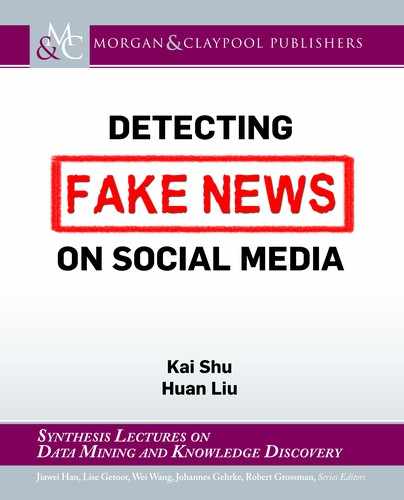
2.4. KNOWLEDGE-BASED METHODS 19
Categories Features Description
Readability Sentence_broken, Characters, Words,
Sentences, Clauses, Average_word_
length, Professional_words, RIX, LIX,
LW
Measuring the clarity and legibility
of the news
Credibility #@, Numerals, Ocial_speech, Time,
Place, Object, Uncertainty, Image
Measuring the rigor and reliability
of the news
Interactivity Question_mark, First_pron, Second_
pron, Interrogative_pron
Measure the interactivity between
the news and the reader
Sensation Sentiment_score, Adv_of_degree,
Modal_particle, First_pronoun, Second
_pronoun, Exclamation_mark, Ques-
tion_mark
Measure the impression that the
news leaves on the reader
Logic Forward reference, Conjunctions Determining whether the news is
logical and contextually coherent or
not
Formality Noun, Adj, Prep, Pron, Verb, Adv, Sen-
tence_broken
Measuring the formality of news
language
Interestingness Rhetoric, Exclamation mark, Face,
Idiom, Adv, Adj
Measuring the interestingness of
news language
Structural
Integrity
HasHead, HasImage, HasVideo,
HasTag, HasAt, HasUrl
Measuring the structural integrity
of news
2.4 KNOWLEDGE-BASED METHODS
..................Content has been hidden....................
You can't read the all page of ebook, please click here login for view all page.
